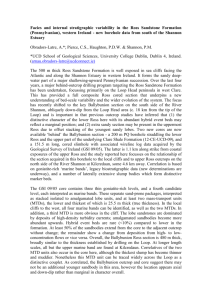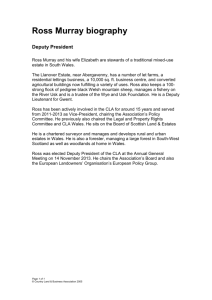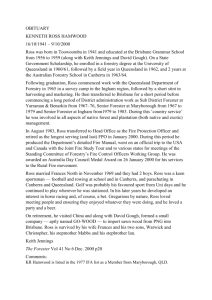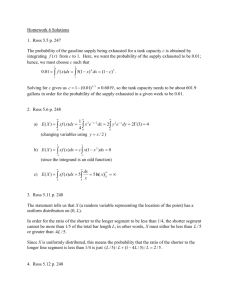Final_IGRM_1st-3rd_March_2013_Poster_Abstract_
advertisement
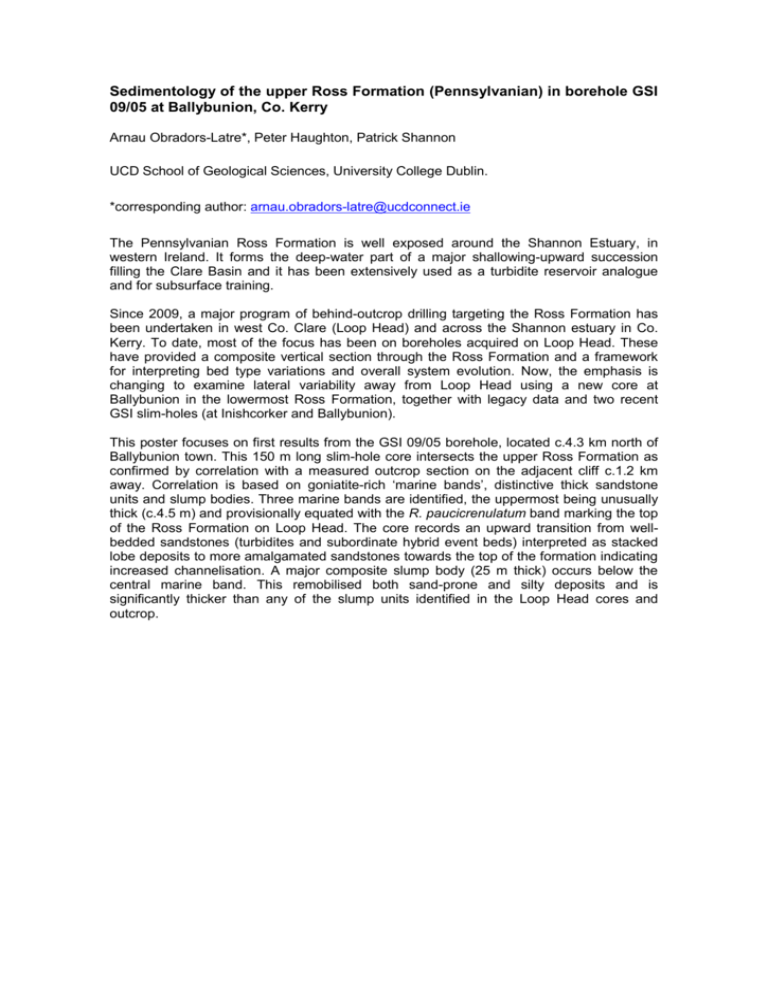
Sedimentology of the upper Ross Formation (Pennsylvanian) in borehole GSI 09/05 at Ballybunion, Co. Kerry Arnau Obradors-Latre*, Peter Haughton, Patrick Shannon UCD School of Geological Sciences, University College Dublin. *corresponding author: arnau.obradors-latre@ucdconnect.ie The Pennsylvanian Ross Formation is well exposed around the Shannon Estuary, in western Ireland. It forms the deep-water part of a major shallowing-upward succession filling the Clare Basin and it has been extensively used as a turbidite reservoir analogue and for subsurface training. Since 2009, a major program of behind-outcrop drilling targeting the Ross Formation has been undertaken in west Co. Clare (Loop Head) and across the Shannon estuary in Co. Kerry. To date, most of the focus has been on boreholes acquired on Loop Head. These have provided a composite vertical section through the Ross Formation and a framework for interpreting bed type variations and overall system evolution. Now, the emphasis is changing to examine lateral variability away from Loop Head using a new core at Ballybunion in the lowermost Ross Formation, together with legacy data and two recent GSI slim-holes (at Inishcorker and Ballybunion). This poster focuses on first results from the GSI 09/05 borehole, located c.4.3 km north of Ballybunion town. This 150 m long slim-hole core intersects the upper Ross Formation as confirmed by correlation with a measured outcrop section on the adjacent cliff c.1.2 km away. Correlation is based on goniatite-rich ‘marine bands’, distinctive thick sandstone units and slump bodies. Three marine bands are identified, the uppermost being unusually thick (c.4.5 m) and provisionally equated with the R. paucicrenulatum band marking the top of the Ross Formation on Loop Head. The core records an upward transition from wellbedded sandstones (turbidites and subordinate hybrid event beds) interpreted as stacked lobe deposits to more amalgamated sandstones towards the top of the formation indicating increased channelisation. A major composite slump body (25 m thick) occurs below the central marine band. This remobilised both sand-prone and silty deposits and is significantly thicker than any of the slump units identified in the Loop Head cores and outcrop.
